Catalog

VMK OPTOELEKTRONIKA
27 products
View:
Telephone number:
E-mail:
info@vmk.ru
Website: https://www.vmk.ru/
Address:
Россия Новосибирская область Новосибирск пр. Коптюга, дом 1, офис 100
Сайт:
https://www.vmk.ru/
Адрес:
Россия Новосибирская область Новосибирск пр. Коптюга, дом 1, офис 100
- Selected: 0Applying
- Selected: 0Names
- Selected: 0Manufacturer
- Selected: 0Made in
- Selected: 0Additional
View:
23 products
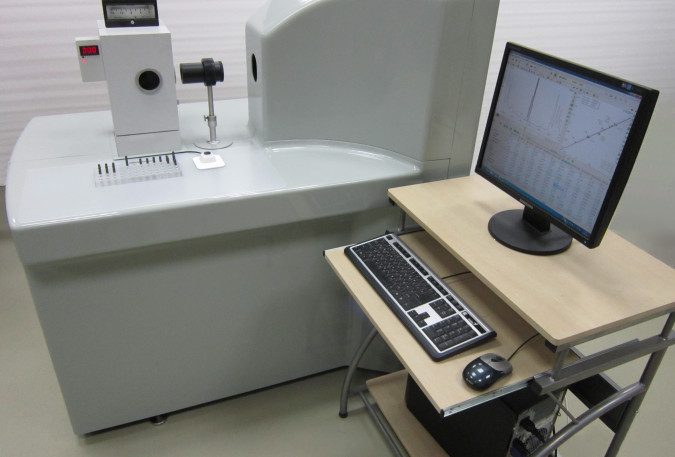
Diesel engine oil spectrometric analysis system "EXPRESS-OIL"
Diesel engine oil spectrometric analysis system "EXPRESS-OIL" is designed to analyze engine oils according to GOST 20759 and determine the concentration of wear elements of rubbing diesel parts, contaminants and additives in diesel engine oils during scheduled maintenance and repair of traction rolling stock in locomotive repair depots, as well as electronic accounting and analysis of dynamics data the content of wear elements in engine oils for each locomotive, as well as the determination of the composition of metals and alloys according to GOST, greases (according to CTCH-28/4, CTCHS-53) and other materials.
VMK OPTOELEKTRONIKA
Novosibirsk
Produced in: Novosibirsk
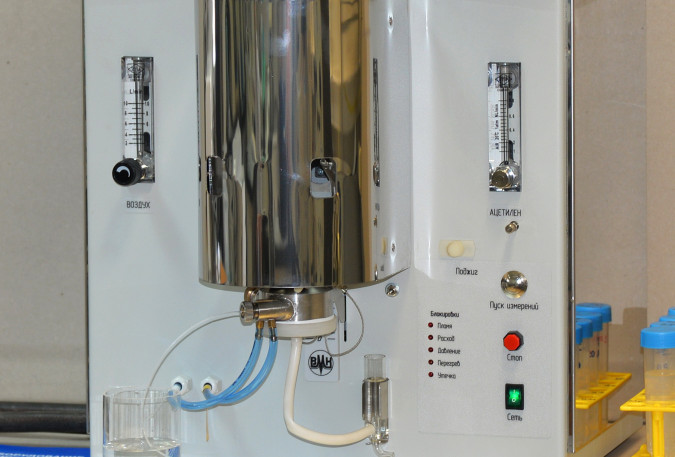
Flame spectrometer "Peacock"
The flame spectrometer is designed for rapid determination of a wide range of concentrations (up to 8 orders of magnitude) of sodium, lithium, potassium, calcium, barium, caesium, rubidium in technological solutions. The excitation of atoms occurs in an air-acetylene flame.
The device consists of a three-slit burner with flame control, a pneumatic sprayer, a spray chamber, an optical radiation input system into the "Hummingbird-2" spectrometer and an automatic air and acetylene supply system, with the possibility to control and adjust gas flow.
The use of a three-slit burner provides increased flame temperature over the central slit of the burner due to the external flame layers. This makes it possible to determine low concentrations of calcium and barium. At the same time, it remains the possibility to determine impurities in highly concentrated solutions without clogging the burner slots.
The lighting system of the spectrometer is mirror-lens, thanks to this, radiation collected from both sides of the burner is introduced into the polychromator.
VMK OPTOELEKTRONIKA
Novosibirsk
Produced in: Novosibirsk

Multichannel analyzer of atomic emission spectra of MAES
The MAES analyzer is a modern means of measuring the intensities of spectral lines and then calculating the concentrations of the elements to be determined.
VMK OPTOELEKTRONIKA
Novosibirsk
Produced in: Novosibirsk
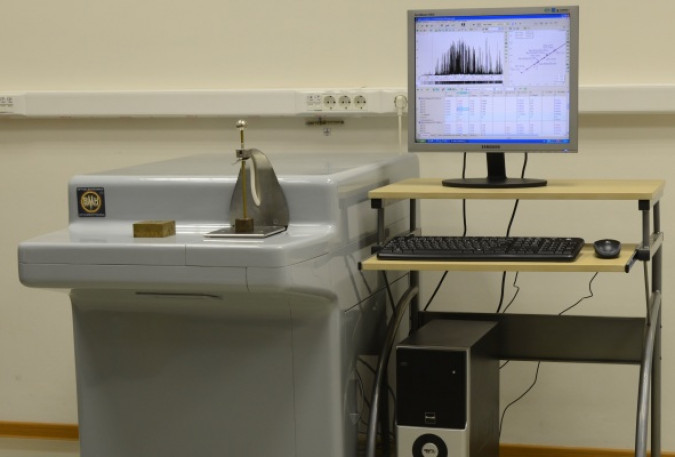
Grand Expert Vacuum Spectrometer
Vacuum spectrometers are designed for rapid analysis of alloys based on iron, copper, aluminum and other metals in factory and research laboratories, including the determination of elements having analytical lines in the field of vacuum ultraviolet (VUV) (for example, S, P and C in steels).
VMK OPTOELEKTRONIKA
Novosibirsk
Produced in: Novosibirsk
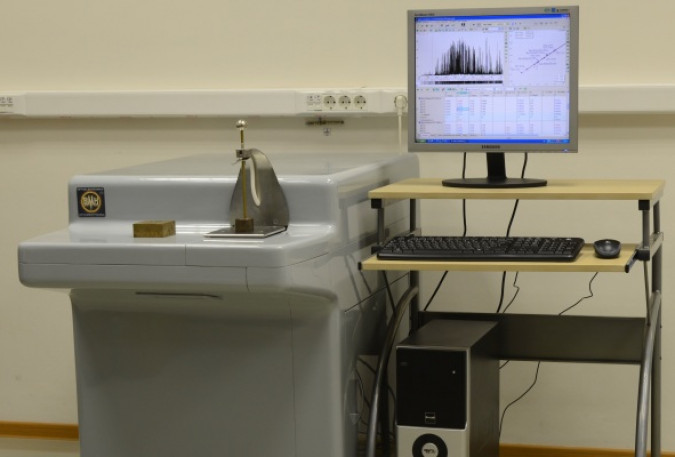
Vacuum Spectrometer Favorite
Vacuum spectrometers are designed for rapid analysis of alloys based on iron, copper, aluminum and other metals in factory and research laboratories, including the determination of elements having analytical lines in the field of vacuum ultraviolet (VUV) (for example, S, P and C in steels).
VMK OPTOELEKTRONIKA
Novosibirsk
Produced in: Novosibirsk

MAES Analyzer for Scintillation
MAES analyzers for recording atomic emission spectra with a time resolution of 1 ms are based on highly sensitive photodiodes and a special switching board for simultaneous reading of several sections of the spectra. The assembly of the rulers is installed on the "Grand" spectrometer.
A " Flow" or twin-jet arc plasmatron is used to excite the atomic emission spectra of powder samples.
The ATOM software registers the selected spectral lines and provides their processing according to the specified algorithms, taking into account the number and brightness of flashes (i.e. particle size).
Recording the spectra of powder samples with a large time resolution makes it possible to estimate the number and size of individual particles, identify their composition and determine the concentrations of elements in each particle, promptly assess the uniformity of the distribution of certain elements to be determined and expand the possibilities of spectral analysis without significant changes in sample preparation.
Main application areas:
mass analysis of powder geological samples by scintillation to determine gold, silver, platinum group metals, iridium, rhodium, etc. with detection limits up to 0.01 g/t;
qualitative determination of the composition of inclusions and mineral particles.
VMK OPTOELEKTRONIKA
Novosibirsk
Produced in: Novosibirsk
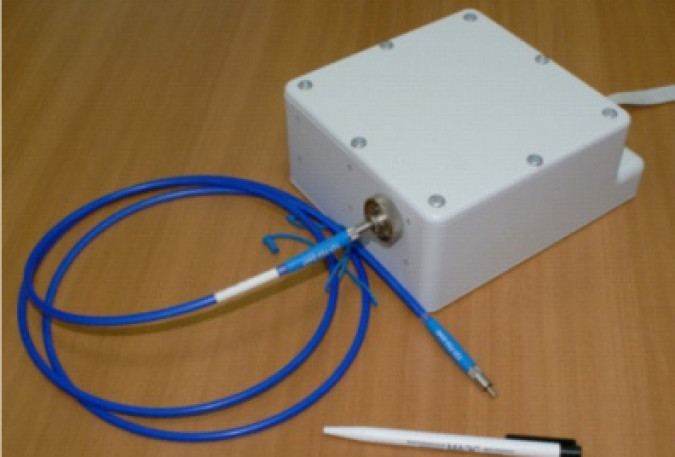
Small-sized multichannel spectrometer - "Hummingbird-2"
The spectrometer was created according to the Cherni-Turner scheme based on a flat diffraction grating and an MAES analyzer with one line of photodetectors. It has increased photometric accuracy due to cooling and temperature stabilization of the photodetector range, as well as due to its shell-less design, in which there is no re-reflection of radiation on the cover glass and the background level in the recorded spectrum decreases. The optical scheme and design of the spectrometer are optimized to obtain a high-quality spectrum with a low level of background radiation in any of the regions lying in the spectral range of 190-1100 nm. The choice of the working area is carried out by changing and rotating the diffraction gratings. The sealed case of the spectrometer is filled with an inert gas. The radiation is injected into the spectrometer using a quartz capacitor or a fiber-optic cable with an SMA-905 connector. The optical scheme and design of the spectrometer are protected by patents.
VMK OPTOELEKTRONIKA
Novosibirsk
Produced in: Novosibirsk
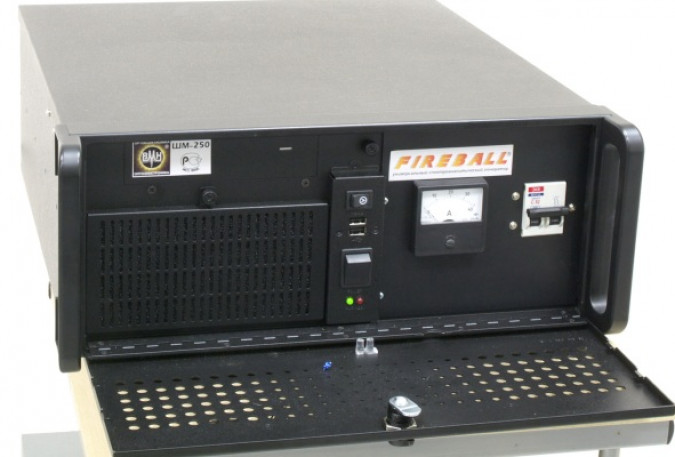
Spectroanalytical generator "Ball lightning"
The generator is designed to produce an electric arc and spark discharge in atomic emission spectral analysis installations. The generator is designed specifically for use in spectral analysis of samples of complex composition for simultaneous determination of impurity and alloying components in a wide range of concentrations.
VMK OPTOELEKTRONIKA
Novosibirsk
Produced in: Novosibirsk
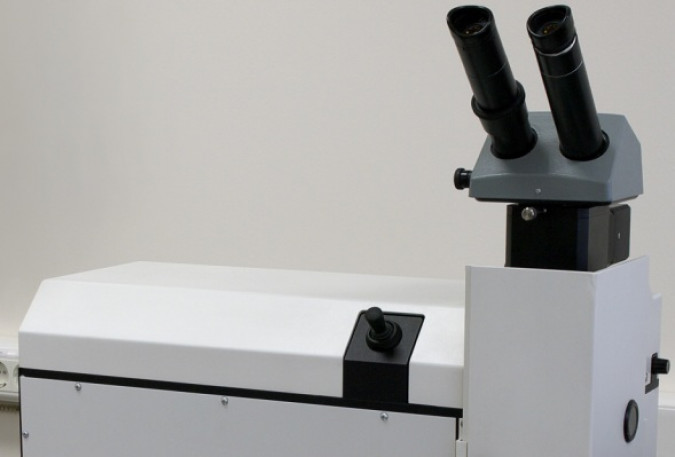
Two-pulse laser source of excitation of atomic emission spectra
The laser source is designed to excite atomic emission spectra when performing qualitative spectral analysis of hard rocks - metals, minerals, glasses and others.
The source is based on a two-pulse YAG: Nd laser with electro-optic Q-switching operating at the main wavelength of 1064 nm. The duration of each pulse is no more than 10 ns, and the delay between them is adjustable from 0 to 60 microseconds.
The possibility of the laser beam to focus on an area of 300 to 1000 microns makes it possible to conduct microanalysis of inclusions, perform two-dimensional scanning of the surface or locally analyze samples with virtually no damage to the surface. A significant advantage of the laser source is the expressiveness and lack of special sample preparation for a wide range of conductive and non-conductive materials.
Visual observation and pointing of the beam at the sample is carried out using a stereoscopic microscope integrated into the system, as well as a high-resolution digital video camera with image transmission to a computer.
Moving the instrument table with a fixed sample is possible both manually for adjustment, and with the help of stepper motors in two coordinates during analysis, which provides surface scanning and spectrum recording with reference to the video image. The installation can be used in conjunction with any spectral devices – "Grand", "Aspect", "Express", "Hummingbird-2", STE-1, DFS-458, MFS-8, PGS-2 and others. The laser source is designed to excite atomic emission spectra when performing high-quality spectral analysis of hard rocks – metals, minerals, glasses and others.
VMK OPTOELEKTRONIKA
Novosibirsk
Produced in: Novosibirsk
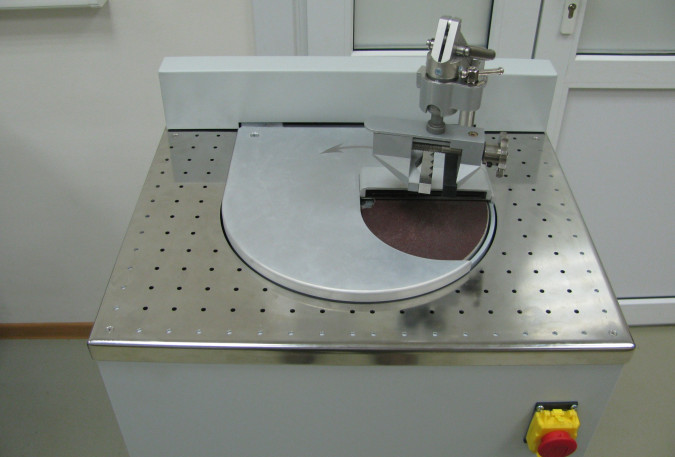
Device for preparation of metal samples
A device for preparing metal samples for spectral analysis.
For the preparation of metal samples, an emery cloth or paper with a given size and abrasive material is used.
The rotation speed is 1500 revolutions per minute.
A quick stop of the motor is provided by an automatic control unit.
There is a version in a housing made of composite materials with two discs, each can have its own type of abrasive.
VMK OPTOELEKTRONIKA
Novosibirsk
Produced in: Novosibirsk
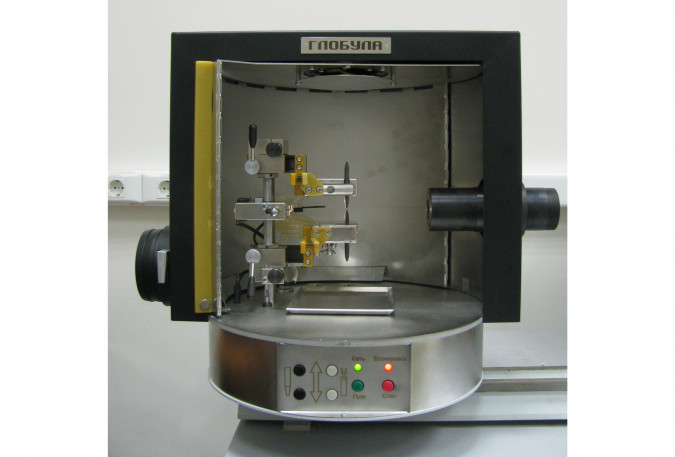
Spectroanalytical tripod "Globula"
The video camera and servos of the electrode holders built into the tripod are designed to automatically maintain the interelectrode gap during the evaporation of the sample by computer analysis in real time of the image of the arc discharge, as well as the initial setting of this gap relative to the optical axis. The electrode holders are cooled with water using a closed-cycle cooling unit.
VMK OPTOELEKTRONIKA
Novosibirsk
Produced in: Novosibirsk
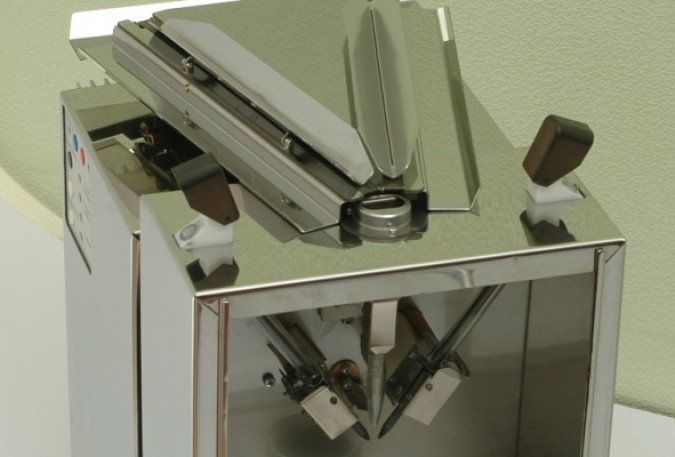
Electric arc installation for the analysis of powder samples by the method of spillage injection "Stream"
The installation is designed to excite atomic emission spectra of powder samples in an electric arc by the spillage-injection method. It provides high performance of routine analyses, has a low consumption of graphite electrodes and is used in conjunction with any spectral devices – "Grand", STE-1, DFS-458, MFS-8, PGS-2, etc.
VMK OPTOELEKTRONIKA
Novosibirsk
Produced in: Novosibirsk